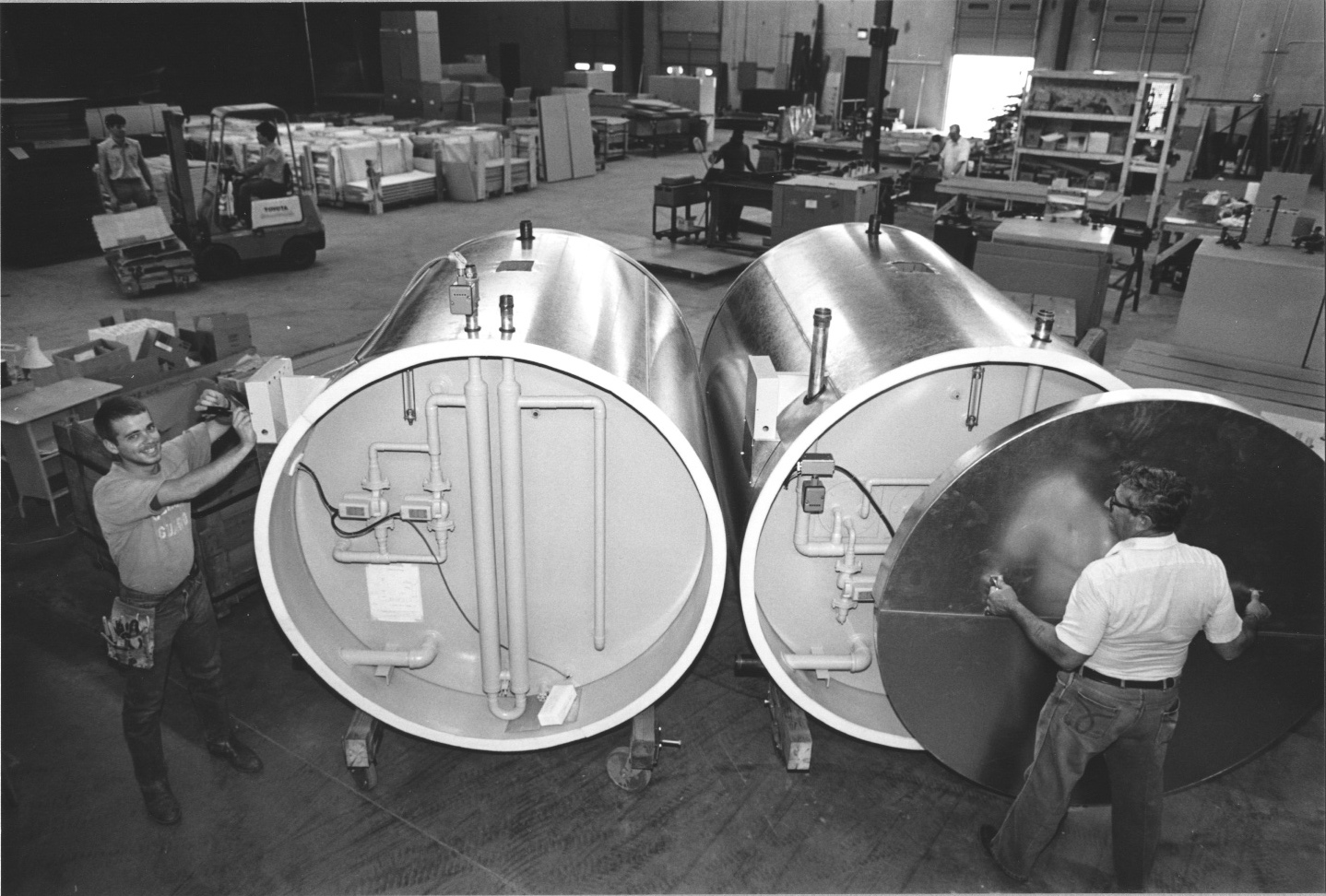Going Strong Since 1978!
Competitors of the Fluid Handling System are the various old line HVAC manufacturers that make tanks, heat exchangers, etc. They include the water heater manufacturers. These people are component suppliers. None of them make a complete package.
 The Fluid Handling System design is unique because it includes all of the following components:
The Fluid Handling System design is unique because it includes all of the following components:
- insulated tank
- heat exchanger(s)
- collector pump(s)
- controls (solar, Btu)
- auto fill system (optional)
All these components are built into a single factory assembled package. All components are designed to work together for the highest efficiency and compatibility. The unified system takes up the least amount of space and requires the least labor to install.
The normal situation is this: An engineer specifies all the components for a solar system: collectors, tank, pumps, controls, insulation, gauges, flow meters, etc. Most engineers have no specific knowledge of solar engineering design. Many parts are overspecified (pumps, exchangers typically), causing high prices or poor performance. Sometimes the controls are not correct, or not accurate.
The winning contractor goes out on the market and buys all the pieces. They arrive at the job site and the technicians assemble and cobble together the completed system in the equipment room. Every job is different. Different contractors, different engineers. There are no factory jigs and fixtures that make assembly fast and accurate. There is no quality control and testing.
The FHS, on the other hand is designed from 30 years experience in solar equipment design to make the components efficient and cost effective. Things can be done in the factory that cannot be done on the job site, such as integrating the heat exchanger and piping and insulation on the tank. Factory level quality control cannot be duplicated in a boiler room. The assembly labor cost for construction work is much higher than for factory work.
Here is an analogy. In the ’50s, my uncle wanted a heat pump on his new home. So he poured a concrete pad outside, bought a compressor, a motor, several pulleys and belts, some controls, an outdoor coil and an indoor coil. He built the thing himself, because you could not buy one in 1953. No one would think of buying a heat pump that way today.
Solar is done the way construction has been done since the 1930s. There are no integrated systems on the market. They are all site fabricated from a bunch of parts. However, the boiler industry does make integrated systems. They are called “Packaged Boilers. The name tells us a lot. They didn’t use to be “Packaged”, they used to be pieces. All boilers are now Packaged Boilers. The solar industry has not caught up.
That is why the FHS is so different. The Holocene FHS is like an appliance. All the technical and fabrication work is done in a factory. The system is carried to the job site and installed by hooking it up to the piping and electric power. It is a “Packaged” system.
The irony is that the FHS has been on the market since 1978, and it still has not been copied! One reason is the fragmented industry. No one company knows all the pieces and can integrate them into a single system. There are pump manufacturers, and tank manufacturers, and exchanger manufacturers, and control manufacturers. They all supply their products as components. None of them makes all the parts or has all the design technology to make them work together.
Holocene has all the design and manufacturing technology to bring all the components together in a superior integrated package.
Dr. Ben
